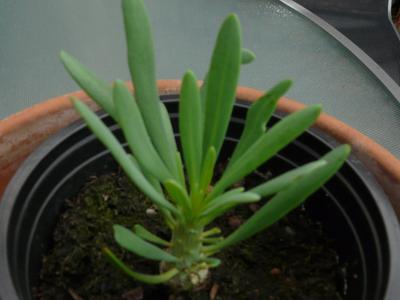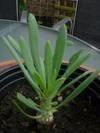
by John Somers
(Wetherby, England)



these plants were found growing in abundance in sandy conditions in Lanzarote. I would like to be able to identify this plant for general care and possible propogation.
Any help would be appreciated.
Hi John, this looks very similar to the Pachypodium, which have that type of growth with a thickened stem and then the leaves clustered at the top. So far, I haven’t seen any that are native to the area you mention, but that doesn’t mean there wouldn’t be a species that originates there.
There are two species here that seem similar to what you have; the first one is a popular one that seems to do well in very dry and sandy situations, and the other one is just so cool with the stubby little tree like growth I just had to share it;
Pachypodium lamerei, the Madagascar Palm
Hope that helps narrow it down a bit for you.
Jacki
Comments for succulent plant discovered on Lanzarote, Canary Islands
Nov 09, 2015
Klenia nerifolia
by: Amante Darmanin
No, it is Klenia nerifolia, an endemic plant of the canary islands.
Oct 17, 2021
definitely Kleinia neriifolia
by: cereusly steve
Its definitely Kleinia neriifolia, winter growing stem succulent widespread in the Canary islands. It is definitely not a spiny Pachypodium from Madagascar.

